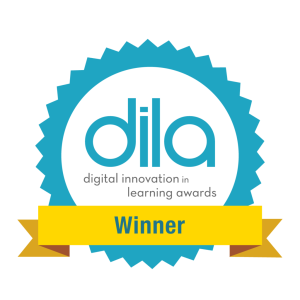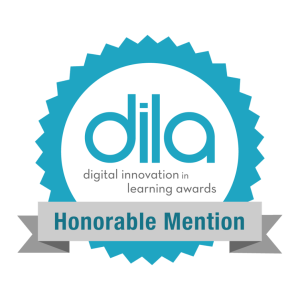Blog Archives
My Pastor was Right. Again.

So a funny thing happened a few years ago. I was sitting in church and our pastor at the time, Steve Wiens, started talking about neuroplasticity. I’ve always been a big nerd at heart, so I immediately took interest. Actually, I was totally eating the science up and loving every second of it. The truth of the matter is that Steve’s message helped me overcome some gunk in my life, and it’s a message I still carry with me when reflecting on change, innovation, and education.
In a nutshell, here’s what I gleaned from Steve’s sermon. We all have habits, tendencies, or even addictions that have become hard-wired into us. Some of these habits are good (holding the door for others, showering, and saying “thank you” are a few examples). Other habits are not so good. In fact, they can be downright destructive (fill in the blank with whatever unhealthy habit or failed New Year’s resolution you have here). If you’re an advanced learner or high-flyer you’re already connecting my sermon notes to education…but try to live in the moment and bear with me one more paragraph.
Our pastor likened these tendencies to footpaths formed in the snow. (I live in Minnesota mind you, so I hope you’re envisioning a lot of snow and very deep footpaths!) The more we travel a path, the easier it becomes to travel. Conversely, forging a new path can be extremely challenging. The first few times through the snow are always the toughest. In fact, it can be so difficult to take a new path that we might choose to revert down the same old path even when we recognize it is no longer the right direction in our lives.
Now on to the neuroscience of educational change. Creating new neurons involves linking something new to existing schema. (Remember, you can’t do this without a new path.) You’ve got to walk differently, practice, and persevere. So how might we link best practice to innovation in education? How do we connect the two in a manner that is “walkable” for others? What does that path even look like?
I believe that we’ve reached a point in education where we are collectively capable of giving kids more than they are currently receiving. All kids deserve innovative schools and I’m not okay with the fact that not all kids are experiencing this. There’s more work to do!
How do we get rid of some of the educational gunk (a.k.a. past tendencies, habits, etc.) and form some new dendrites? (See what I did there with the dendrites thing?!) I propose that we start by taking the first step. And then the next. Here are a couple examples so that this is not pure hyperbole:
- We know that students deserve redesigned learning spaces that support the 21st-century skills they’ll need…so we should take the first step in making it happen within our own sphere of influence (classroom, school, district, etc.)
- We know that we cannot be the experts of everything, and that connecting with other educators regardless of time/proximity only makes sense…so we should take the first step in helping a colleague on this path. We need to get more people connected so we can better serve our students.
Thinking different requires different steps. Different doing. And it is possible! My pastor was right.
_
Yes! This blog is moving to a new home. Hop over to www.BradGustafson.com to see how the Adjusting Course blog looks “all grown up.” I’d love your feedback on the new site too.
Where Ideas Go to Die
 Image Credit: Pixabay.com
Image Credit: Pixabay.com
Good idea. Bad idea. Things are not always black and white. Even the best ideas (or intentions) can lead to bad things if the culture of a school is not conducive to innovation.
It’s easy to say that we will do what’s best for kids, but more difficult to discern what is actually best when considering the potential impact on different stakeholders. Is research-based best practice the gold standard that we should never deviate from? Or is there room for new and untested ideas in education?
I tend to believe that kids deserve both, and so it pains me to know that there have been times that I’ve been a barrier to innovation. I know that I have made decisions that stifled progress. For example, this past school year one of our teachers approached me with an idea. He wanted to have our entire school (approximately 860 students) meet outside for an all-school photograph to commemorate our 50th anniversary…and he wanted the photo to be taken from a few hundred feet in the air.
I thought the idea of an aerial shot taken from one of our school’s drones sounded cool, but my visceral response was one of hesitancy. I tried to dissuade him because I thought that getting nearly 1,000 people (students and staff) outside at the same time would be too intrusive on teachers’ busy schedules. If I’m being completely honest, I probably also wanted to avoid undue criticism from anyone who was not super excited about the idea.
My perspective was skewed towards protecting the “routine” so we could keep moving forward. After all, what is best for kids is protecting the learning environment and their routine…right?!
Fortunately, the teacher who wanted to add this neat drone video perspective was pretty passionate about the idea. I quickly realized that a school’s 50th anniversary may actually be grounds for disrupting the routine. Long story short, we all met outside and it turned out to be some of the most amazing video footage I’ve ever seen. The best part is that our students are still raving about it.
 Image Credit: Twitter via @GWtechWPS
Image Credit: Twitter via @GWtechWPS
When I stare at the picture above it’s hard for me to distinguish their faces, but I do remember their reactions. They loved it. After watching the drone video they even started to think differently about things. I think we all did. This served as a reminder that there is an opportunity cost to what we say no to. Even if it is under the guise of “what’s best for kids.”
Most people do not wake up in the morning wanting to dash another person’s dreams…oftentimes we do it unknowingly. I pray that “What’s Best for Kids” is not where ideas go to die. I pray that I am not the person who kills them.
–
**Yes! The Adjusting Course blog is moving to a new home. Hop over to www.BradGustafson.com to subscribe to my new “ad free” blog. It will literally only take six seconds…unless your internet is slow…or you type slow…
I’ll keep cross-posting here for another month or so to give everyone a chance to switch over to the new site. (I’d love your feedback on the design too.)
Becoming David
When I was younger I heard stories about a young boy named David. He defeated a strong adversary named Goliath. Growing up I learned about other unlikely triumphs as well:
- The New York Giants faced their Goliath in Super Bowl XLII. They went toe-to-toe with the undefeated New England Patriots, and scored two touchdowns in the 4th quarter to pull off a dramatic upset.
- Thomas Edison invented the light bulb after facing his Goliath hundreds and hundreds of times. If you had asked Edison, he’d have said that he did not fail 1,000 times, but instead he learned 1,000 ways not to make a light bulb. What a perspective!
- Truman eventually triumphed over Dewey in the 1948 Presidential Election, but only after being counted out early by the Chicago Tribune. They were so certain of his demise that they ran headlines that were incorrect.
Each of the examples above involves an epic upset from the past, but what would the educational headlines say today? Would they mistakenly predict a victory for Goliath?
A vast number of conversations are currently being dedicated to assessment and accountability. My concern is that assessment for the purpose of ranking students or comparing kids is not sound pedagogy. How a student fills in his bubbles should not be the sole purpose of education or the single determinant of his success. Is this best for kids, and who is responsible for this storyline?
In many ways we are responsible and may indirectly perpetuate some of the very things we care deeply about changing. The good news is that we can all aspire to be like David in confronting the status quo; we are the New York Giants, Thomas Edison, and Harry S. Truman rolled into one.
Against all odds, I believe the status quo is in for a whooping! The greatest comeback story in education is playing out right now in innovative classrooms across the country. Inspiring educators are focused on high achievement for each and every child, and we’re writing a new educational narrative at the same time.
Through personalized learning, meaningful technology integration, and establishing authentic relationships our focus is on student passion, potential, collaboration, critical-thinking, creation, and sharing.
I bet Goliath never saw this coming! It’s rally time and we must persevere.
We are David and our students are counting on us to see this through!
**Photo Credit: GreenhousesportsBlogspot.com














